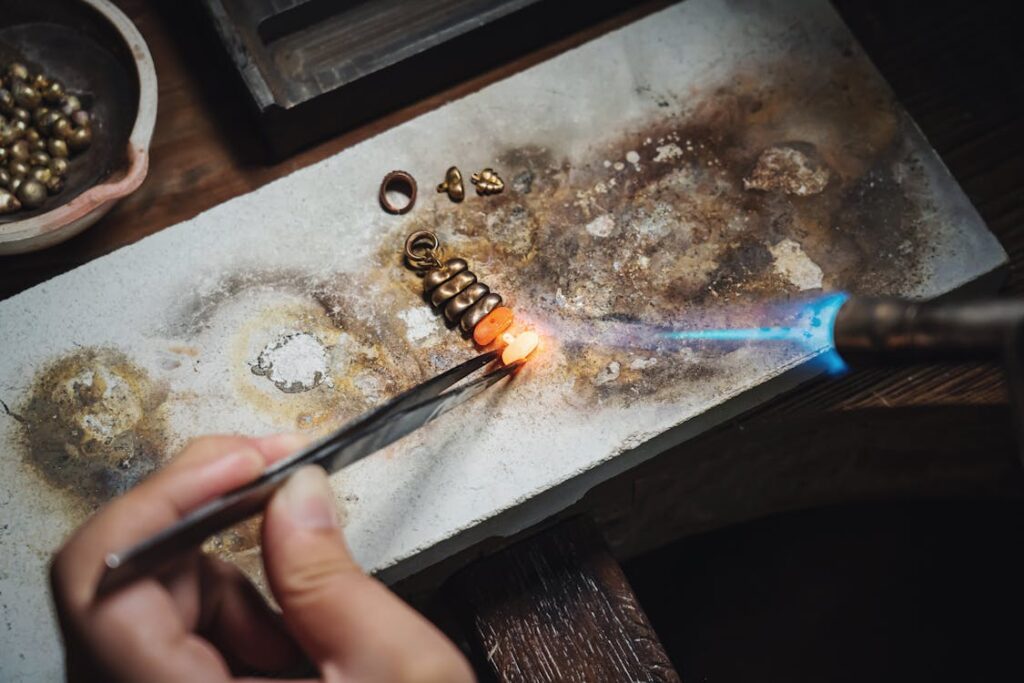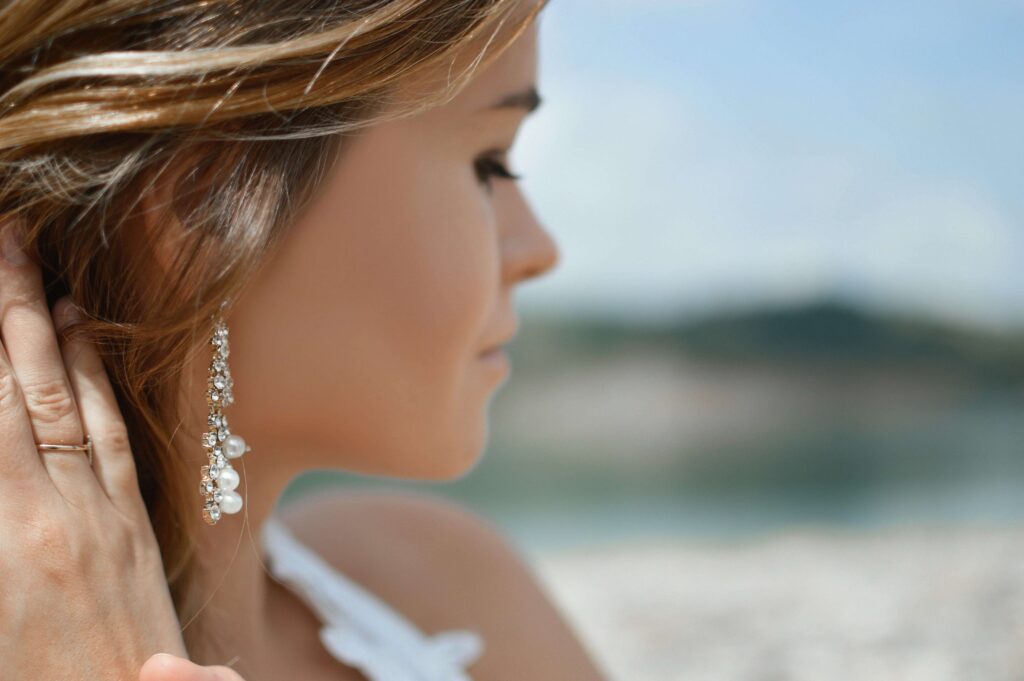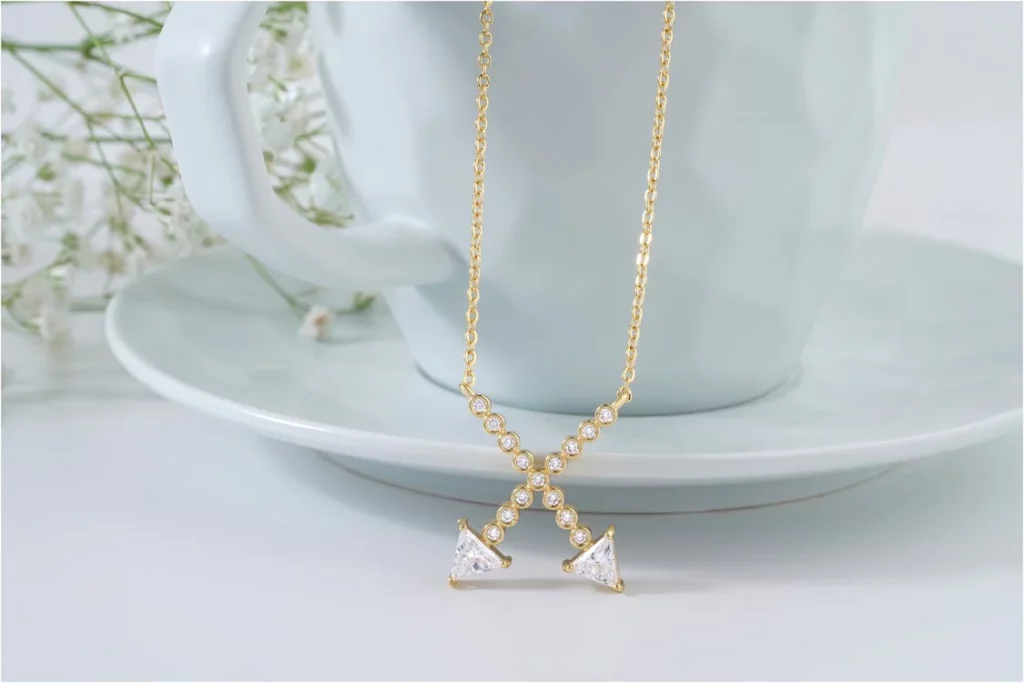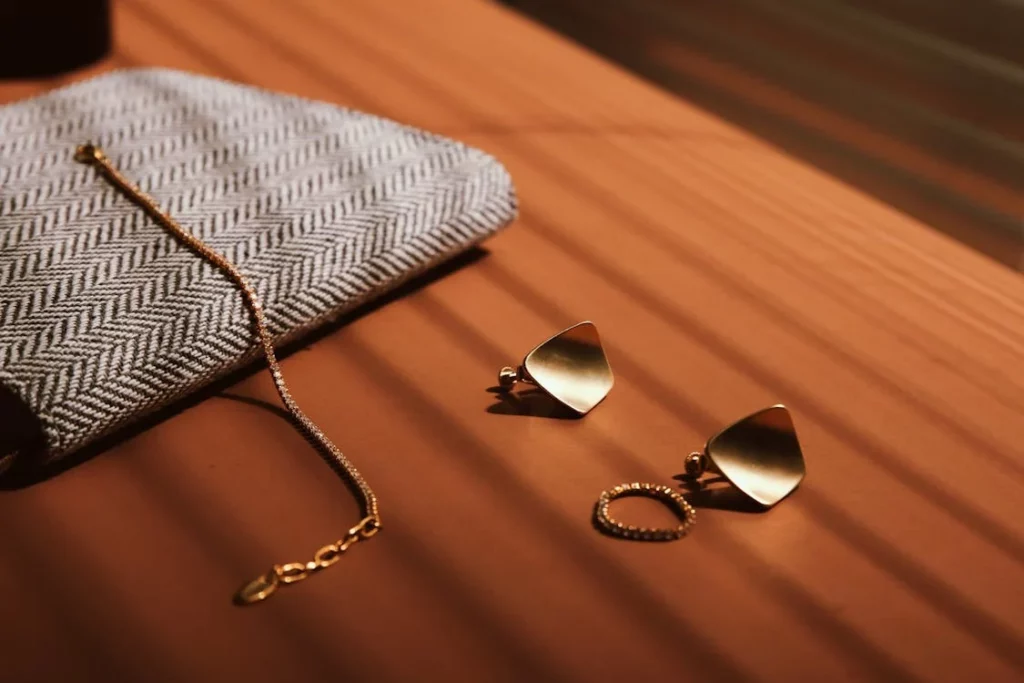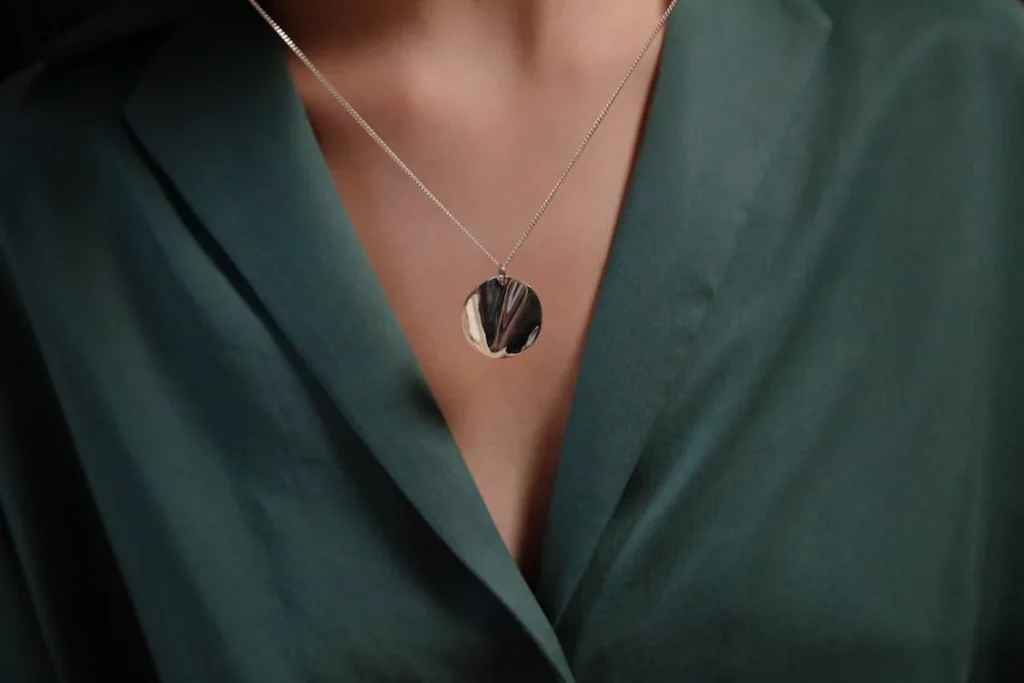Everyday hair styling can often feel like a chore, especially when trying to find the right accessory to keep your hair in place. Whether heading to work, hitting the gym, or attending a special event, the type of hair tie you choose can make all the difference. Among the popular options, plastic and gold metal hair ties are often the most favored choices, each catering to different styles and hair care needs. In this fashion blog, we’ll explore their differences, examining their unique features, materials, and suitability for various hair types. So let’s dive into them and discover which one suits you best!

What Are Gold Metal Hair Ties?


Gold metal hair ties are stylish hair accessories designed to secure hair while adding a touch of elegance. These hair ties typically feature a core elastic band, which provides stretch and support, combined with metal accents that enhance their aesthetic appeal.
These accessories come in various styles, including coil designs, which resemble old-fashioned telephone cords, and flat bands that wrap around the hair for a polished look. Zusätzlich, some gold hair ties feature unique shapes, such as geometric designs or floral motifs. The versatility of these gold elastic hair bands makes them suitable for different hair types, from fine and straight to thick and curly, ensuring a secure yet stylish hold.
What Are Gold Metal Hair Ties Made Of?
Gold metal hair ties consist of two primary components: an elastic base and a decorative metal piece. The elastic portion is typically crafted from durable materials like nylon or spandex, providing the necessary stretch to keep the hair secure without causing breakage. The metal piece, usually made from a zinc alloy and plated with gold, gives these hair ties their distinct and luxurious appearance. The quality of the hair tie with metal piece used can impact both the durability and aesthetics, with some designs featuring a polished finish to prevent tarnishing and maintain a radiant shine.
What Are Plastic Hair Ties?

Plastic hair ties, often referred to as spiral hair ties, plastic elastic hair bands, or coil hair ties, these ties are designed to secure hair without causing excessive tension or breakage. The most popular style is the spiral coil, which mimics the design of an old telephone cord. This unique shape allows the hair tie to grip the hair securely without pulling or creating creases, making it a popular choice for daily wear. Plastic hair ties also come in other styles, including flat bands and thin round elastics, catering to different preferences.
What Are Plastic Hair Ties Made Of?
Plastic hair ties are typically made from materials like thermoplastic polyurethane (TPU) or silicone. TPU is known for its elasticity, resistance to oils and grease, and overall durability, which allows the hair tie to stretch and return to its original shape without snapping. Silicone hair ties, though less common, are softer and gentler on the hair, making them a good choice for those with delicate or damaged hair.
Plastik vs. Haargummis aus goldenem Metall: Which Is Better?
Before you learn how to choose, you should know what their differences are. Each type has its strengths, and picking the right one depends on your hair type, daily activities, and styling preferences. Here’s a comparison chart outlining the key differences:
| Feature | Plastic Hair Ties | Haargummis aus goldenem Metall |
| Material | Thermoplastic polyurethane (TPU) or silicone | Elastic core with gold-plated metal accents |
| Haltbarkeit | Highly durable but may lose elasticity over time | Long-lasting, resistant to stretching |
| Grip | Gentle hold, suitable for all-day wear | Firm grip, ideal for secure styles |
| Hair Types | Suitable for all hair types, especially fine and delicate | Best for medium to thick hair; can be too heavy for fine hair |
| Comfort | Lightweight, reduces pulling and tension | Can cause pulling due to heavier metal components |
| Stil | Casual, sporty, available in a variety of colors and shapes | Elegant, adds a stylish, polished look |
| Crease Potential | Minimizes creases and marks | May leave creases due to firmer hold |
| Price Range | Erschwinglich, budget-friendly | Higher price, reflects luxury and quality |
| Environmental Impact | Non-biodegradable plastic; eco-friendly options available | Metal components are more durable but can contribute to waste |
| Suitability for Formal Events | Primarily casual or athletic use | Ideal for both casual and formal events |
Wann Sie wählen sollten:
- Plastic Hair Ties: For casual outings, workouts, or quick hair fixes. They’re perfect for those with delicate or easily damaged hair.
- Haargummis aus goldenem Metall: Ideal for more formal occasions or when you want to add a chic touch to your hairstyle. Best suited for medium to thick hair to avoid pulling.
What Are the Alternatives to Plastic Hair Ties?

If you’re looking for alternatives to plastic hair ties, there are several options that offer different materials and benefits for your hair:
- Fabric Scrunchies: Soft and gentle, scrunchies made from fabric like cotton, silk, or velvet prevent breakage and creases while adding a stylish touch.
- Silicone Hair Bands: Stretchy and strong, these non-slip bands offer a firm hold and are often used for secure styles, especially in sports or high-intensity activities.
- Elastic Hair Ties without Metal: These ties are gentle on hair, reducing snagging and damage, and come in a variety of thicknesses for different hair types.
- Ribbon Hair Ties: Flat, soft bands that tie in a bow or knot, offering a more customizable fit without pulling or denting the hair.
- Natural Rubber Hair Ties: Eco-friendly and biodegradable, these ties are durable, stretchable, and better for the environment compared to synthetic materials.
- Claw Clips: A non-elastic option, claw clips securely hold hair in place without tension, making them a great choice for preventing damage or headaches.
- Spiral Hair Ties: A variation of plastic ties but made from softer materials, spiral ties distribute pressure evenly, minimizing creases and breakage.
What to Consider When Choosing the Right Hair Ties?
Several factors play a role in making the best choice, so let’s break down what to look for when shopping for hair ties.
Do They Maintain Their Elasticity over Time?
The longevity of a hair tie largely depends on its ability to retain elasticity after repeated use. High-quality hair ties, especially those made from durable materials like spandex or nylon, can hold their shape and stretch for months, reducing the need for frequent replacements. Cheap elastic bands often lose their strength after just a few uses, making them less cost-effective in the long run.
Do They Provide a Comfortable Fit Without Pulling?
A hair tie should feel comfortable all day without causing tension or pulling. Elastic bands that are too tight can lead to discomfort or even headaches. Scrunchies and spiral ties are known for distributing pressure more evenly, making them more comfortable for extended wear. These designs reduce the likelihood of scalp discomfort, even when worn for long periods.
Do They Leave Creases or Marks in the Hair?
Hair ties that are too tight or poorly designed can leave unsightly creases after removal. Plastic coil hair ties, thanks to their unique shape, minimize dents in the hair by evenly spreading tension. Scrunchies with soft fabric also tend to leave fewer marks, making them a better choice when you want to preserve your hairstyle throughout the day.
Are the Hair Ties Suitable for All Hair Types?
Fine hair can benefit from smaller, lighter bands that won’t slip, while thick or curly hair needs stronger, more durable options. Spiral ties and fabric scrunchies work well for a variety of textures. For those purchasing in bulk, hair tie wholesale options often include different sizes to accommodate diverse hair types, making them ideal for salons or retail.
Will They Prevent Hair Damage or Breakage?
Hair breakage is often caused by ties that are too tight or made from rough materials. Smooth, fabric-covered options like silk or satin scrunchies are gentler on hair, preventing split ends and damage. Rubber or metal-free bands are another good choice for those seeking to reduce the risk of breakage.
Are the Hair Ties Easy to Clean and Maintain?
Hair ties tend to accumulate oil, dirt, and hair products, so ease of cleaning is a key factor. Fabric scrunchies can often be washed by hand or in the machine, while silicone bands are water-resistant and easy to wipe down. Keeping hair ties clean ensures they last longer and stay hygienic for daily use.
Are Hair Ties Good for the Environment?
Many consumers today are also concerned about the environmental impact of their products. Eco-friendly options, like those made from natural rubber or organic cotton, are gaining popularity as sustainable alternatives. Hair tie suppliers now offer biodegradable or recyclable options, making it easier to make an environmentally conscious choice while still ensuring quality and durability.
Abschluss
In the end, choosing between a plastic and a gold metal hair tie depends on your unique hair needs and style preferences. Both options offer their own benefits, whether it’s plastic’s practicality or gold’s sophistication. Take a moment to evaluate what works best for your hair type and daily routine, and don’t hesitate to try out different styles. With the right hair tie, you can effortlessly achieve your desired look while keeping your hair healthy and beautiful!


